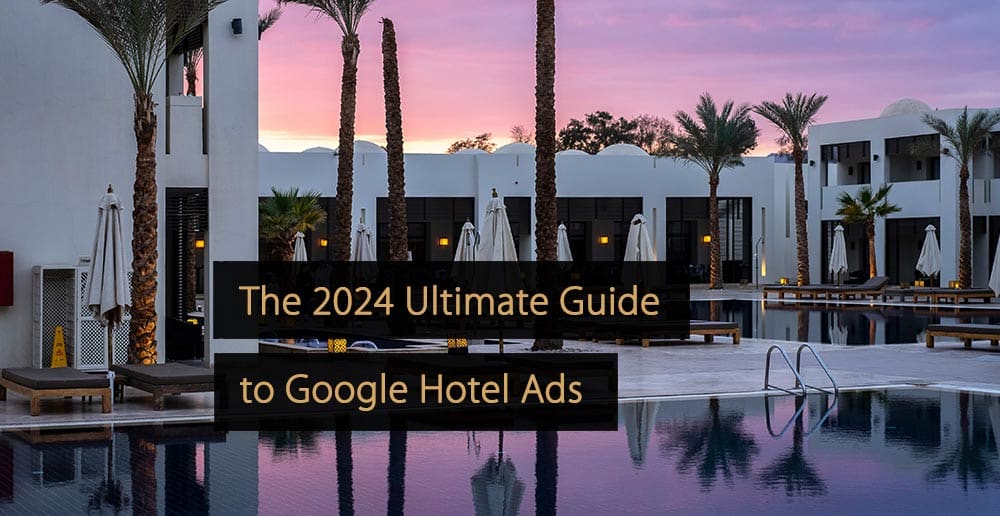Question for Our Revenue Management Expert Panel:
How can hotels use micro-segmentation to its full potential? At what point does it become too “micro” to be valuable and what tips can you share for achieving success? (Question by Pablo Torres)
Industry Expert Panel
Our Industry Expert Panel exists out of professionals within the hospitality & travel Industry. They have comprehensive and detailed knowledge, experience in practice or management and are forward-thinking. They are answering questions about the state of the industry. They share their insights on topics like revenue management, marketing, operations, technology and discuss the latest trends.
Our Revenue Management Expert Panel
- Pablo Torres – Hotel Consultant
- Tanya Hadwick – Group Revenue & Yield Leader, SunSwept Resorts
- Connor Vanderholm – CEO, Topline
- Heiko Rieder – Vice President Business Development, Travel Charme Hotels & Resorts
- Niko Krauseneck – Founder, RevenueRebel
- Diego Fernández Pérez De Ponga – Director of Revenue Management, Palladium Hotel Group
- Damiano Zennaro – Founder, DZ Consulting
- Massimiliano Terzulli – Revenue Management Consultant, Franco Grasso Revenue Team
- Fabian Bartnick – Founder, Infinito
- Krunal Shah – Director of Revenue Management, The Biltmore Mayfair, LXR Hotels & Resorts
- Silvia Cantarella – Revenue Management Consultant, Revenue Acrobats
- Mariska van Heemskerk – Owner, Revenue Management Works
- Oleksii Kapichin – Revenue Management Professional
- Pallavi Gaonkar – Director of Revenue, Ayada Maldives
- Aida Muñoz – Director of Revenue Strategy, Hotel Investment Partners (HIP)
- Ask Our Panel a Question
- Join Our Expert Panel
“The objective when one is segmenting the clientele is, from the revenue point of view, to maximise the profitability of your sales. And from a customer-centric point of view, to optimise their experience.
The sweet spot is when both are at their highest. Why? Because if you try to be “too micro” with your segmentation, you might end up annoying or frustrating some of your clients, to whom you don’t offer added value anymore. On the opposite side, if you are too vanilla, not segmenting, then the added value is also low, and, more dangerously, the total revenue generated will also be lower.”
“As more guests look for bespoke, personalised service and experiences micro-segmentation enables us to tailor pricing and promotions to meet the characteristics and behaviours (even the preferences) of the guests. Understanding the motivation for travel and geographical sources allows the property to meet the specific needs of the guests.
Overall it’s easy to segment by traits, needs and behaviours, however, it also needs to be realistic to enable a trend. However, as you delve into micro-segmentation it’s also imperative that the data collection is accurate, there is still a level of scalability and it isn’t too arduous so new trends can be readily adapted to.
While we utilise a bespoke personalisation tool to enhance the customer’s journey with us, it still plays with behaviour and customer needs with a more scalable preference model. Overall the aim is always to maximise the revenue opportunity and improve customer satisfaction, however, until we truly embrace all the AI tools we still need to create small targeted segments versus a truly individual approach.”
“With industry shifts towards portfolio revenue management, the practical use of micro-segmentation should be generally relegated to data input for automated systems. Big data ingestion can be very useful for an RMS’ decision-making but is simply too much for our human brains to do anything with (other than jumping down the rabbit hole).
I think the granularity of this data will continue to be refined for use in algorithmic decisions as technology continues to advance. There are massive macro benefits to collecting and analysing sub-segment trends and preferences.”
“I think the crucial element here is the amount of data available. Going too granular can also result in many segments with too little meaningful data. Also, the more segments there are, the higher the potential for human error in its usage. Unless fully automated (which usually increases the amount of system admin work and performance) training for reservations staff is essential to ensure a clear understanding of all codes without room for personal interpretation. For single properties, this is easier to realise than in cluster operations or central reservations offices. If the correctness of the data is not fully trusted, it tends to get ignored or aggregated by the analysts.
Leaving the above-mentioned risks aside, from an analytical view data can not be granular enough. Who doesn’t know the situation of analysing a data set and feeling the need to go a level deeper, for instance from the customer who booked at BAR to the channel used, at what lead time, at how many nights, from what region, age group, etc.
The key is that this multi-dimensional reporting is crucial for targeted marketing and pricing decisions. Whether or not it should be translated from market segmentation or other codes depends very much on the system infrastructure and the options the reservation systems and possible middleware can handle and transfer reliably and ideally without manual interference.”
“What is the purpose of segmentation? It’s to better understand your business. Segments help analyse your past and future bookings to identify discrepancies. For example, you may discover that your on-the-books data for May is behind compared to the same point last year because your group business is 50% lower. Why is it 50% lower? Was it a strategic decision to shift focus towards transient business to increase profitability? Or did you not receive as many requests, indicating a need to increase your sales activities? In this case, segmentation helps you make informed business decisions as you can target segments individually.
Segments also help in forecasting, defining netRevPar, strategic planning and so on. However, the moment a segment cannot be addressed individually, it becomes unnecessary. Over-segmentation can lead to losing sight of the big picture and getting lost in small, inefficient analyses and actions. While segmentation highly depends on one’s type of business, it should be kept as simple as possible in my view. For example, at a budget hotel company, we only used ‘Individual contracted’, ‘Individual non-contracted’, ‘Groups contracted’, and ‘Groups non-contracted’. This could be further divided into ‘Direct’ and ‘Indirect’, and that’s probably enough segmentation for most hotels.”
“From our business perspective, we have very granular segmentation, where we reach the market and sub-market issuer (with a predominantly geographical character) and then a second layer where we incorporate the Business Sources, through which the reservation enters, and finally the segment, which is the rate paid by our client.
This segmentation allows us to cross-reference data on the geographical origins of the business and how that combines with the type of channel that was used to book, giving us a very granular reading of the business.”
“Micro-segmentation is the driver for hyper-personalisation which is and will be a hot topic from a sales, revenue management and (digital) marketing perspective. However, to work at its best, micro-segmentation will need technology to monetise and capitalise on all opportunities linked to a commercial strategy which privileges direct bookings.
In my opinion, the more granular the better if you wish to approach micro-segments with specific, ad-hoc promotions.”
“Segmentation is necessary to understand the strength of each sales channel, but the more detailed it is, the more it risks misleading. It depends a lot on the type of property, location, number of rooms, and target market.
Generally, segmentation grouped by source of reservations (OTA vs Direct, Dynamic Channels vs Wholesalers/Tour Operators) can already be of great help.
Also very useful is data segmentation (pickup, occupancy, ADR) by room type, which is necessary to understand the level of demand and interest for each room type and therefore make informed pricing decisions.”
“Why would we want to go micro-segment if segmentation is not working? Every other field is going personalisation, hyper-personalisation. The fundamental issue though, will be that we do not have people who can deal with the complexity, and therefore the limit will be implied by the human capital.”
“It is imperative first to understand the process of segregating markets and customers into small subcategories that have common characteristics. Micro-segmentations help to identify opportunities with existing and potential clients within those segments. To effectively utilise micro-segmentation, I would suggest having insight into the market as well as information on buyer data.
Once you have identified current and potential buyer segments, you can begin your testing into each market with specific strategies for that market. Successfully using micro-segmentation will definitely lead to faster growth as well as incremental gain on the non-forecasted revenue thereby increasing the profitability.”
“I use micro-segmentation when I have a precise scope that the overall data insights, or the analysis provided by my systems, cannot unravel. Revenue managers love to play with details but the “The devil is in the details” can quickly turn into “The devil is the Excel sheets” when we become too micro. In order not to get lost in the micro and lose sight of the big picture, it is important for me to keep this kind of analysis limited to a very specific need and not lose focus on the overall revenue/profit optimisation.”
“There are many factors to consider in analysing your data, which also depends on the systems you are using and how data is processed. My advice would be to keep segmentations clean and not too complex and keep in mind that they should be used for budget/forecast purposes, sales targets, etc. Then use segments and cross-data for analysis with other data elements like rate plan, purpose of stay, source/channel, lead time, length of stay etc. This way your segmentation is clean and clear and you can still deep dive into your results but using other elements.”
“We are all unique, and ideally, the hotels should be able to customise offers on the level of individual guests. Is it realistic? It’s not if it’s done manually. It’s time-consuming to open every guest profile, read notes, analyse booking behaviour, past pricing, past offers booked, etc., and then build a customer offer. However, combining a good hotel CRM system with AI can make this process speedy and effective. In the not-so-distant future, this level of micro-segmentation will become a reality, in my opinion.”
“Micro-segmentation facilitates a more profound comprehension of the target audience. Having worked in the Maldives for a decade, where leisure remains the predominant segment, we refine our approach by categorising travellers into distinct segments: Couples, Families, Wellness seekers, and Adventure enthusiasts. Our strategy revolves around aligning our offerings with the varying needs of these segments.
During school holidays, we emphasise family packages to cater to the needs of families, while couples are targeted throughout the year. For diving enthusiasts, we focus on specific times of the year when the conditions in the destination are optimal for exploring the ocean depths.”
“In determining the extent of micro-segmentation within revenue management, it is crucial to assess its practical utility and potential profitability for the business. Commence by establishing a comprehensive segmentation framework, then delve deeper to gauge the viability of further segmentation.
Evaluate booking patterns to ascertain the divergence among segments.
Consider the following factors:
– The prevailing distribution landscape within the hospitality sector may impose limitations on the feasibility of extensive micro-segmentation.
– While Customer Relationship Management (CRM) holds significant value in various industries such as retail, its applicability in hospitality, where destination selection often precedes other travel decisions, may be comparatively limited. Influencing destination choices, which typically represent a substantial portion of marketing expenditure, poses inherent challenges.
Adhering to standardized segmentation guidelines, such as those proposed by the Uniform System of Accounts for the Lodging Industry (USALI), raises pertinent questions regarding the necessity for further micro-segmentation. Exceptions may be warranted in specific scenarios.
Despite the potential benefits, widespread adoption of micro-segmentation within the hospitality sector remains relatively uncommon. While instances of its effective implementation exist, its applicability may vary depending on unique business dynamics and strategic objectives.”
Ask a Question & Join Our Expert Panel
Would you like a question to be answered by our Industry Expert Panel? Or would you like to join our community of experts and share your experience, insights, and knowledge with fellow industry professionals? Via the buttons below you can submit a question or submit a request to become part of our expert panel.






















Leave A Comment